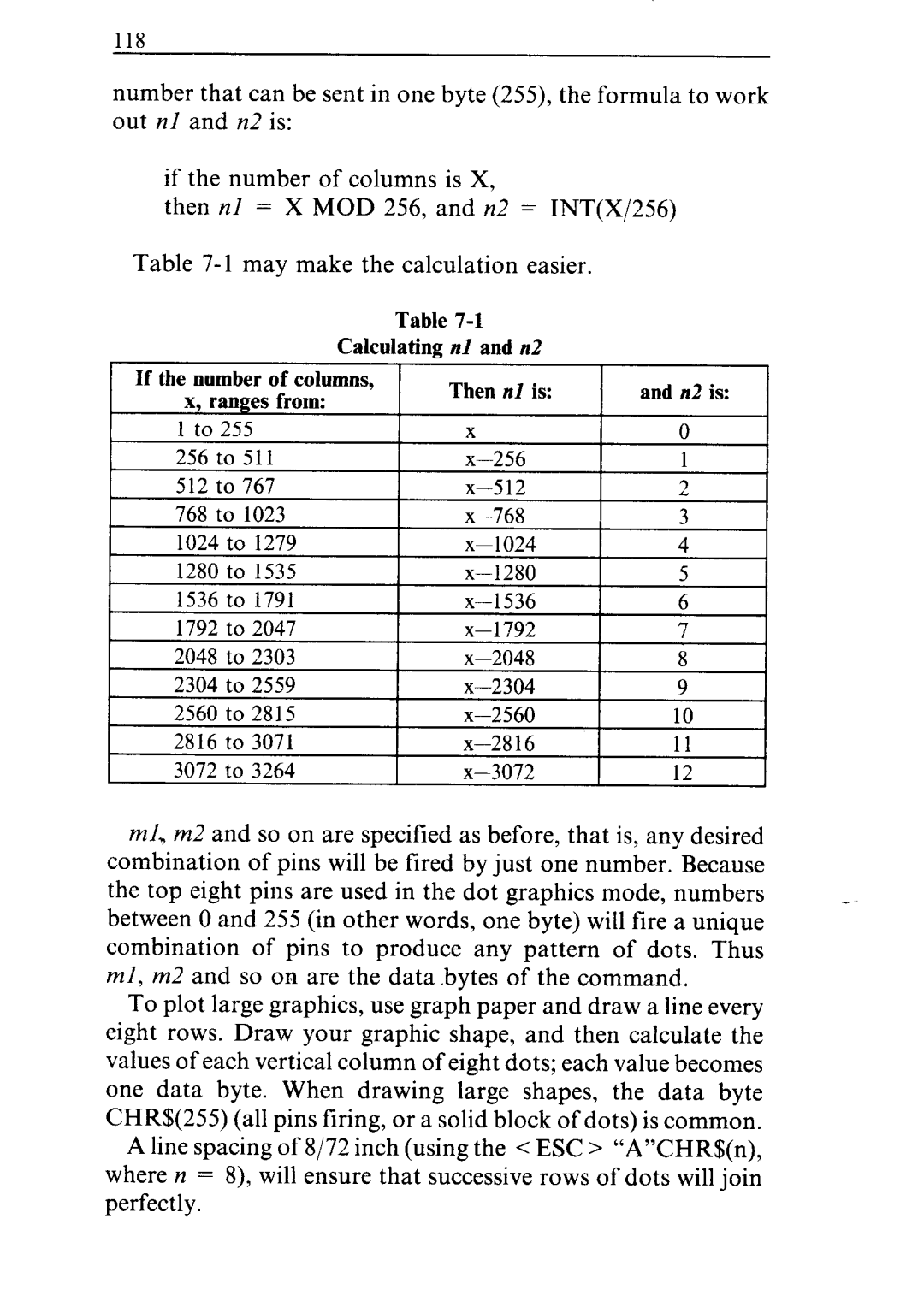
number that can be sent in one byte (259, the formula to work out nl and n2 is:
if the number of columns is X,
then nl = X MOD 256, and n2 = INT(X/256)
Table
Table
Calculating nl and n2
1If the nrlmber of columns, x, ranges from:
1 to 255
256 to 511
512 to 767
768 to 1023
1024 to 1279
1280 to 1535
1536 to 1791
1792 to 2047
2048 to 2303
2304 to 2559
2560 to 2815
2816 to 3071
3072 to 3264
Then | nl is: | and n2 is: |
X |
| 0 |
1 | ||
2 | ||
3 | ||
4 | ||
5 | ||
536 | 6 | |
7 | ||
8 | ||
9 | ||
10 | ||
11 | ||
12 | ||
ml, m2 and so on are specified as before, that is, any desired combination of pins will be fired by just one number. Because the top eight pins are used in the dot graphics mode, numbers between 0 and 255 (in other words, one byte) will fire a unique combination of pins to produce any pattern of dots. Thus ml, m2 and so on are the data .bytes of the command.
To plot large graphics, use graph paper and draw a line every eight rows. Draw your graphic shape, and then calculate the values of each vertical column of eight dots; each value becomes one data byte. When drawing large shapes, the data byte CHR$(255) (all pins firing, or a solid block of dots) is common.
A line spacing of 8/72 inch (using the < ESC > “A”CHR$(n), where n = S), will ensure that successive rows of dots will join perfectly.
